Adult Orthodontics
The Difference between Child and Adult Orthodontics
Most think orthodontics is a treatment for youth. This is just a myth, orthodontics does work for
elders, and is also effective to move teeth of older patients. Someone say that teeth movement is
slower and cause more pain. These are also misunderstandings, pain and speed of movement do vary,
but according to individual character, not age.
Basically, the aim of adult orthodontics
differs from child orthodontics. Jaw bones of children are not completed, so the main aim is to
modify the growth (Stage I). Adults do not have growth potential, so we can only align teeth
coordinating to the completed jaw bones. In summary, child orthodontics is for “jawbone guidance”,
and adult orthodontics is for “teeth alignment only”. However, the range of adult tooth movement is
now excessive than most imagine, even without bone modification. Most adult cases can be treated
except few cases with large bone discrepancy. Orthodontics can change the appearance, smile,
function, health, and life. Please consult us if there is anything that concerns you.
Issues of Adult Orthodontics
Understanding the Physical Condition
Adult orthodontics without surgical approach cannot change the skeleton, as we have described. Thus, it is very important to understand the present physical condition of facial part, which is totally different in every patient, at first. The facial skeleton, lateral facial profile, smile line, and soft tissue (togue and gingiva) should be examined carefully first. And then set a plan based on academic evidence base to coordinate tooth alignment to fit them. This is “individual skeleton-based treatment”.
Obtain Functional Occlusion
Orthodontics is not all for cosmetic purpose. Our doctors dedicated on orthodontics
in Tokyo Medical and Dental University, whose orthodontic
treatment lay great emphasis on
correcting occlusal functions. Appropriate masticatory function does not cause excessive loading to
stomach and intestines, correct muscular function lead to correct pronunciation and swallow. Moreover,
functional occlusion induces esthetical alignment spontaneously.
Surgical Orthodontics Collaborating with Other Clinics
Severe skeletal problems should be considerate to treat by surgical orthodontics. This is a treatment covered and incorporated by national medical insurance in Japan. We are sorry that our clinic does not apply insurance presently. Therefore, the patients are judged to be applied to surgery, we will refer them to our collaborating clinics or hospitals.
Clear and Esthetic Braces
Traditional labial (front side of teeth) orthodontics is treated with wires and
braces. Labial orthodontics is the most mature and completed technique. Though many new techniques have
appeared recently, it is still the most effective and efficient method for both doctors and patients.
Thus, we use this technique mainly. In the rest of world, metal braces are major, but clear braces
are used in almost all cases in Japan. Esthetics during the treatment is much increased with these
appliances.
Advantages of Labial Orthodontics
- Indicated to all cases with different difficulty.
- Cost less than other orthodontic techniques.
- Variable devices can be selected.
- Developed for a long history, the most mature and effective technique.
- Move teeth most efficiently, thus take the least treatment duration.
Q. What are the differences between orthodontic treatments at a general dental clinic and a specialized orthodontic clinic?
A. I will explain the respective advantages and disadvantages.
In the case of a specialized orthodontic clinic
Advantages
- As orthodontists are full-time, they can respond quickly to issues during treatment (such as appliance detachment, dealing with wire ends poking the cheek).
- A wide range of treatments (front side, back side, mouthpiece correction) can be proposed.
- Since the director is an orthodontist, stable long-term treatment can be provided.
- Equipped with the necessary facilities for orthodontic treatment (dental CT, head X-ray standards).
- Easier to schedule appointments according to your wishes (leading to possible reduction in treatment period).
Disadvantages
- Cannot treat cavities before or during treatment.
- Extractions are performed at other clinics.
In the case of a general dental clinic
Advantages
- Parallel treatment of cavities and orthodontic treatment is possible.
- Can handle extractions.
Disadvantages
- If the orthodontist is part-time, there may only be 1-2 clinic days per month, and immediate response to treatment issues might not be possible. Also, less flexibility in appointment scheduling.
- Part-time orthodontists may resign during treatment, leading to unclear responsibility and costs.
- Often, the dentist in charge of orthodontics is not a specialist, limiting the treatment methods and applicable symptoms.
- Lack of specialized orthodontic equipment and X-rays (especially head X-ray standards) is common.
Q. What does it mean to conduct detailed examinations, diagnosis, and treatment planning?
【Understanding the Starting Point ①: Detailed Examination & Data Collection】



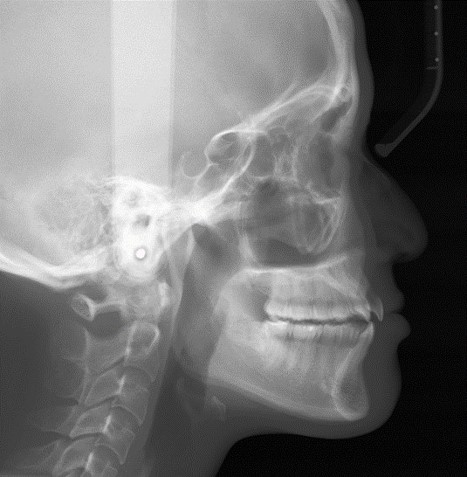


【Understanding the Starting Point ②: Numerical Analysis】
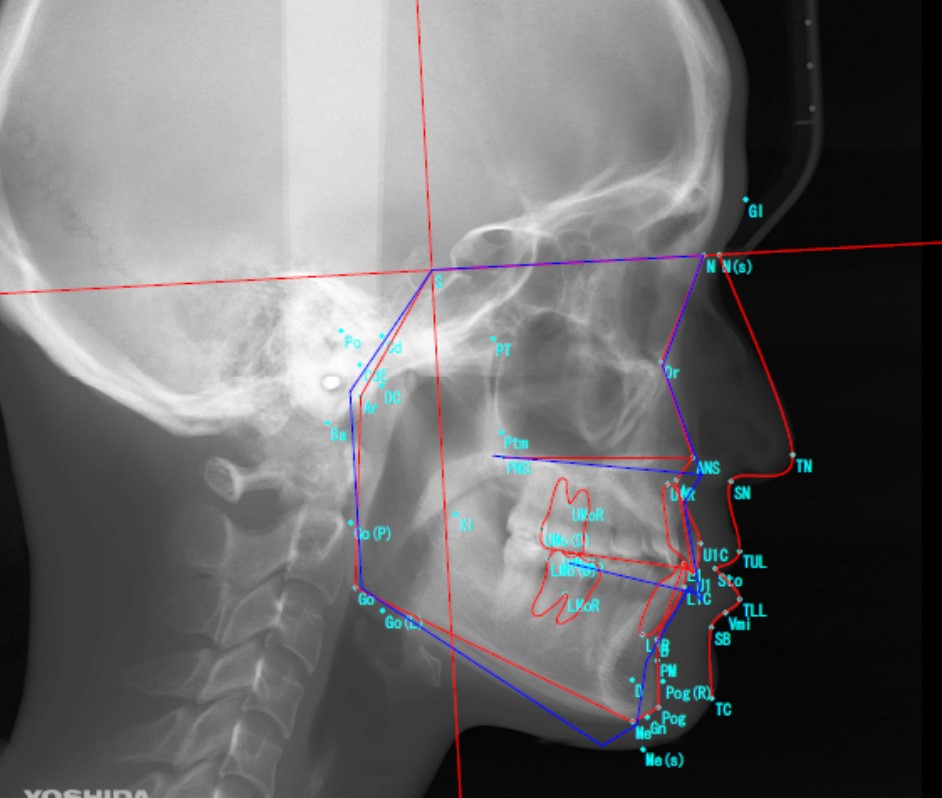
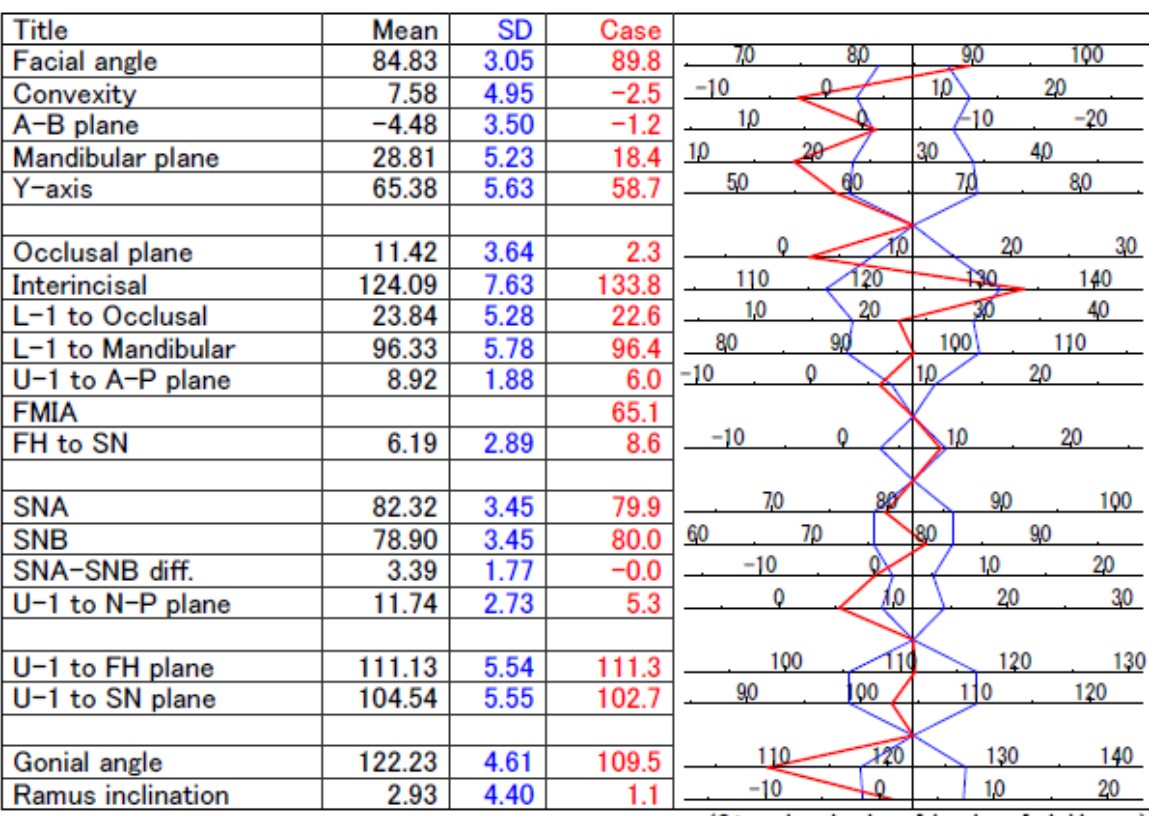

【Setting the Goal: Diagnosis & Treatment Planning】

- Presentation of whether extraction will be necessary or not
- Presentation of treatment process (order of tooth movement)
- Presentation of the treatment device (method)
- Presentation of the approximate treatment duration
| Adult Orthodontics | Clear Plastic Braces with Metal Wires | ¥770,000 |
|---|---|---|
| Clear Ceramic Braces with White Wires | ¥880,000 | |
| Metal Braces with Metal Wires | ¥715,000 |
※Because the amount is large, installment payments are possible. There are no
fees.
There is no upper limit on the number of installments, but as long as you can pay by
the time the orthodontic device is removed, there is no problem.
※In most cases, the basic
treatment fee covers all device costs (without additional charges), but sometimes special auxiliary
devices are necessary. In such cases, we will explain and, with your consent, charge the additional cost
at actual expenses.
Utilization of Digital Equipment
Our clinic uses a simulation software that integrates data from an intraoral scanner “iTero” and a dental CT to visualize information about your mouth. It is not widely known, but teeth are aligned on top of the jawbone. This simulation software visualizes the limit of movement and safe position of teeth during orthodontic treatment, thereby providing a safe and secure orthodontic treatment while avoiding risks such as gingival recession.
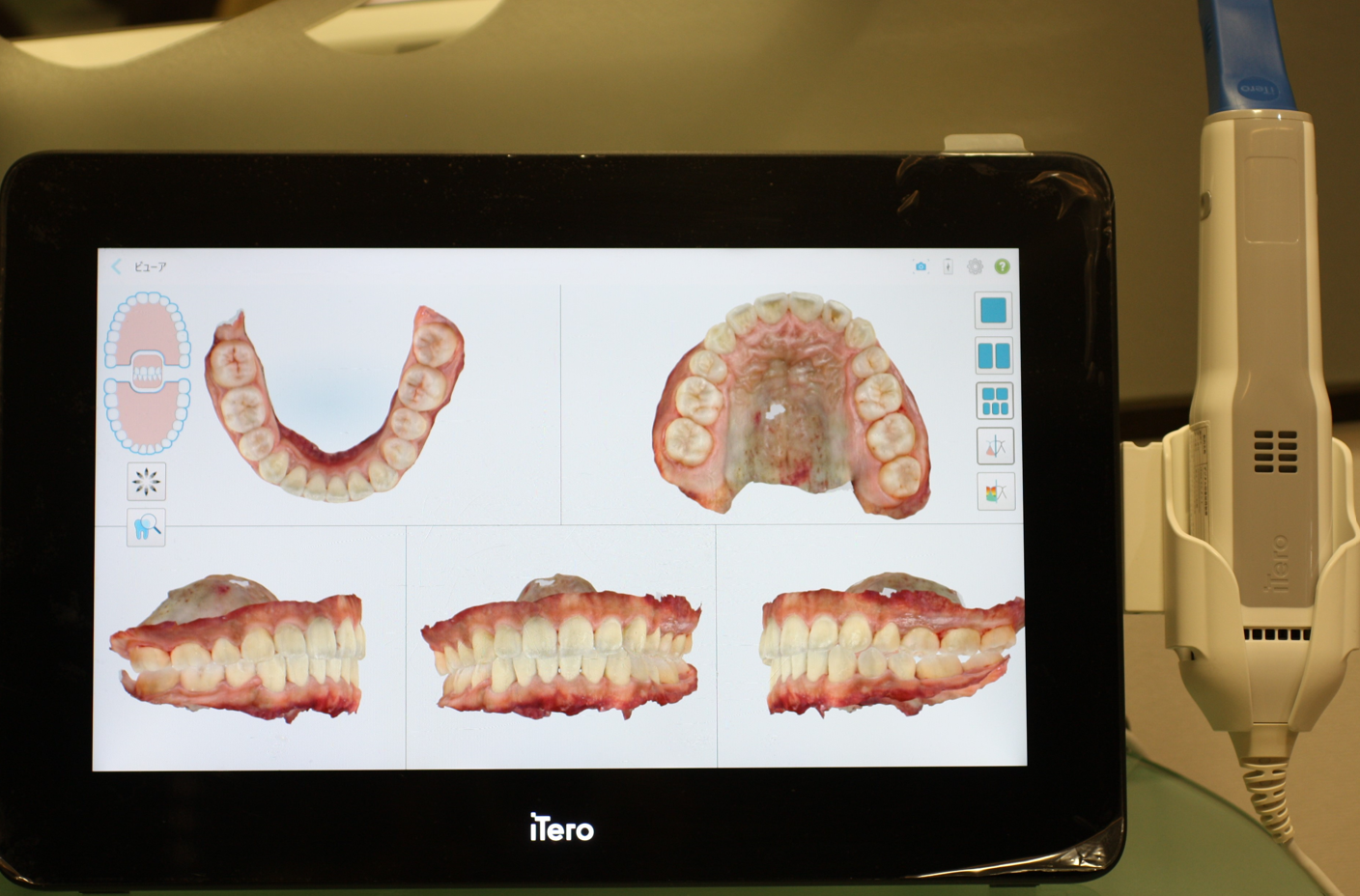
【Intraoral Scanner】
We scan the current alignment of your teeth and reproduce it on the monitor.
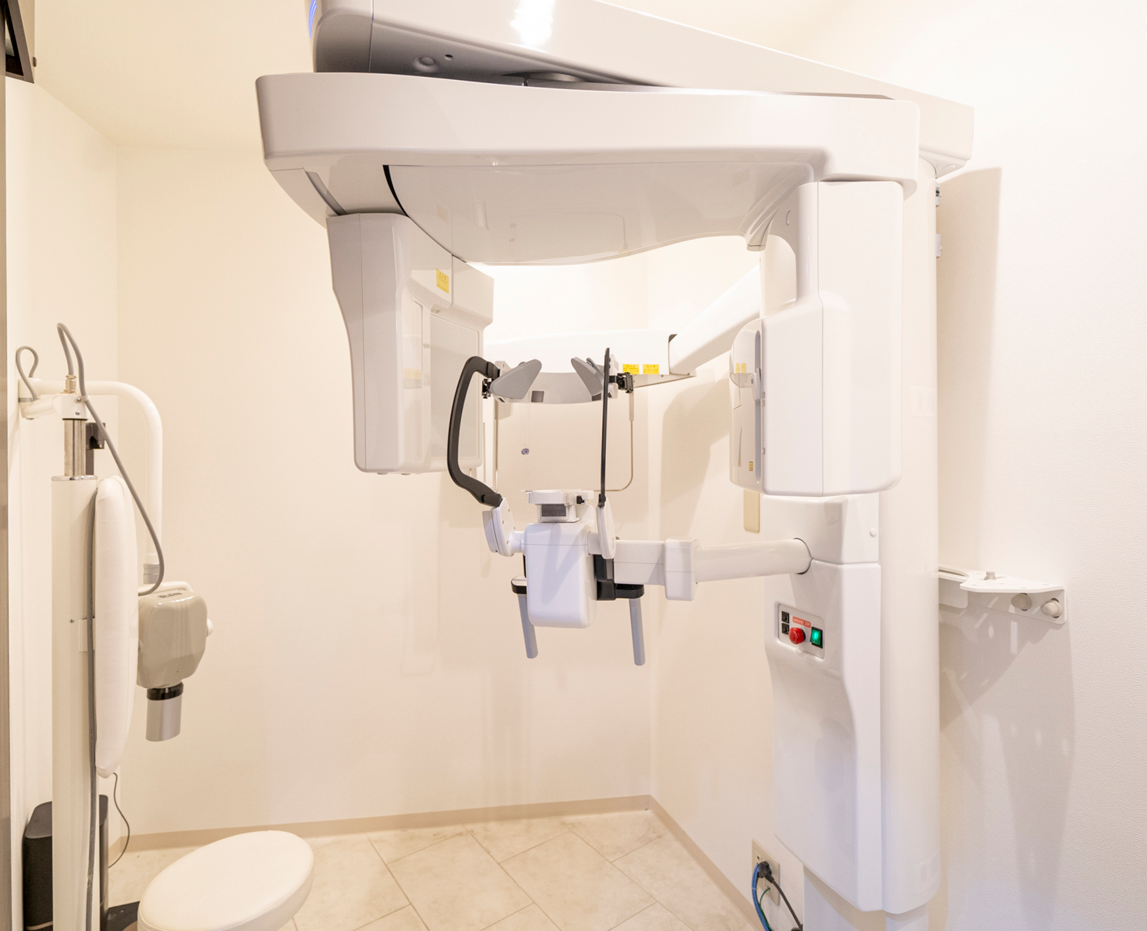
【Dental CT】
We obtain information about the thickness of jawbones, shape of teeth, temporomandibular joints, etc., using low-exposure CT imaging.
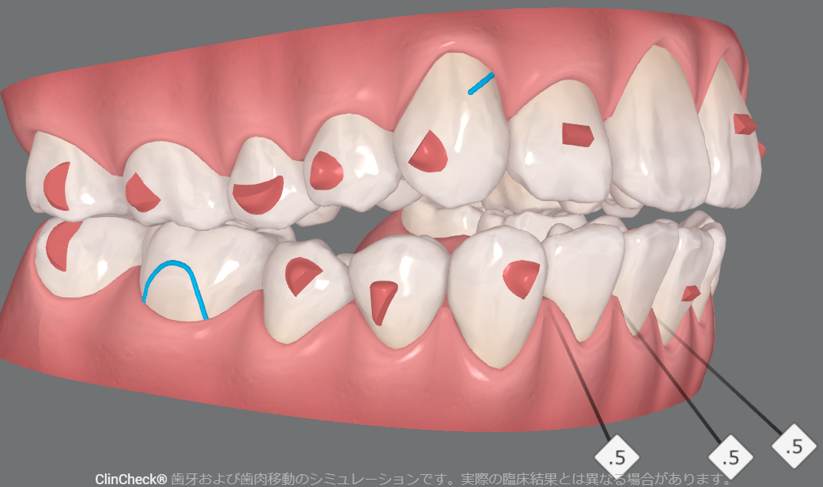
【Simulation Software】
We integrate the information about your mouth obtained from the intraoral scanner and dental CT, and show you a simulation plan of the treatment.
Combined treatment with dental orthodontic anchor screws
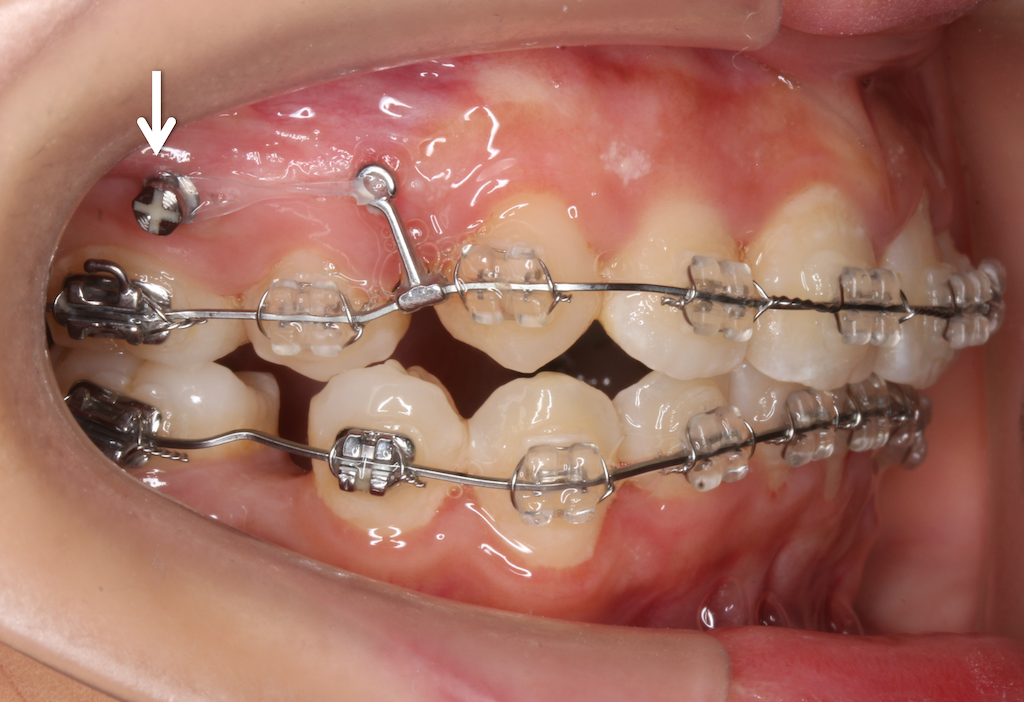
Anchor screws refer to small titanium screws with high biocompatibility, measuring
about 6mm in length and 1.5mm in width. They serve as a fixed source for moving teeth during orthodontic
treatment and are temporarily implanted in the jawbone. This method allows for a broader range of tooth
movement, enabling more aggressive treatment, as well as reducing treatment time and improving outcomes.
Our clinic offers treatments that utilize these dental orthodontic anchor screws, tailored
to the patient’s symptoms.
Treatment Duration and Frequency of Visits
General Orthodontic Treatment Duration
Since all patients have different condition and initial alignment, it is difficult to estimate the treatment duration uniformly. But in general, it takes 2 years in average for “active treatment” which is the duration wearing braces. The mechanism of tooth movement is to disrupt the surrounding bones of teeth and then regenerate them, thus the velocity is biological limited. We cannot move teeth too quickly that damage tissues.
Frequency of Visits
The cycle of tooth movement is about 3 weeks, so we usually ask patients to come once in a month for wire adjustment. If it is not possible to take an appointment so frequently, for the reason such as living a distant place or being busy, we can elongate it. And we will adjust the devices fitting to the appointments.
Retention
After the braces removed, the “retainer” is necessary to keep the treated alignment. There are several types of retainers, but most of them are removable. The duration of retention is about 1 year for 24 hours. If the alignment of teeth become stable, the retainer can be worn only during sleep.
The Procedure of Treatment
At first visit, we will ask you about where you want to improve and your request. Then we will tell you the estimated total fee and approximate treatment plan. If you have any problem about tooth alignment, please consult us freely. This consultation is free of charge and is available for multiple times. Moreover, it is also available to consult us online through consultation form. Please feel free to contact us.
If you have decided to be treated in our clinic, we need to have an examination including impression, photo and X-ray taking. Please do not worry about the exposure of X-ray since our machine is digital with very low dose.
We analyze the materials from examination carefully at first. Then develop a plan fitting to the patient’s individual condition and request. We will also refer the patient to our collaboration clinics to have general dental treatment if necessary.
Deliver braces or other orthodontic devices. It takes longer time in this appointment. We also explain the precautions to patient at the first time.
Let patients have daily life with orthodontic devices. We need to check and adjust the appliances regularly. In general, appointment is taken once a month.
After goals of orthodontics completed, we remove the devices. The alignment is not stable at this point, so the retainers are necessary to be wear.
After active is finished, we still need to follow up the stability of dentition and check the occlusion regularly. It is also necessary to clean and check the fitting of retainers. However, the frequency of visit may be reduced much than the active treatment.
Our Counseling Policy
- 1. We respect the wishes and feelings of our patients regarding their treatment.
- 2. In explaining to patients and responding to questions, we avoid difficult medical terms and provide clear answers.
- 3. We value a trust relationship that begins with active listening.
- 4. By presenting the advantages and disadvantages of each treatment method, we aim to prevent as much as possible the asymmetry of information between doctor and patient.
- 5. The chief physician Kanaya and the deputy chief physician Rai will be in charge from counseling to treatment.
We believe that the opportunity for an initial consultation is not just about choosing or being chosen for a treatment method, but a time to better learn about orthodontic treatment and to engage in dialogue. We hope this will alleviate any anxiety and deepen understanding of orthodontic treatment. Please feel free to make an appointment for an initial consultation and visit us.



